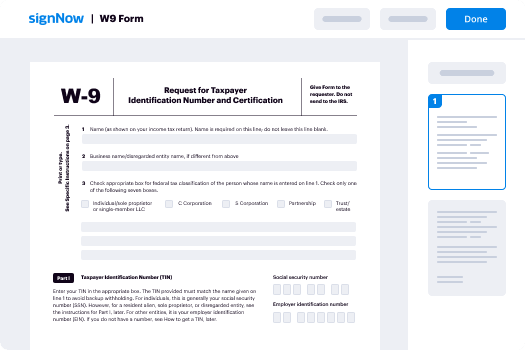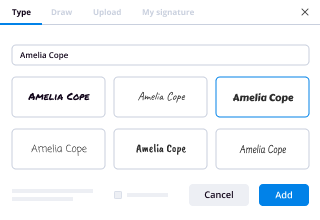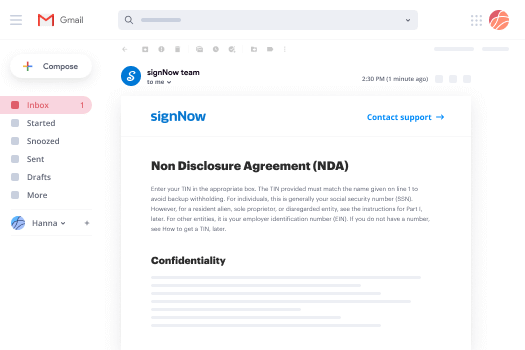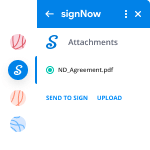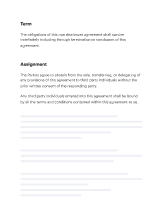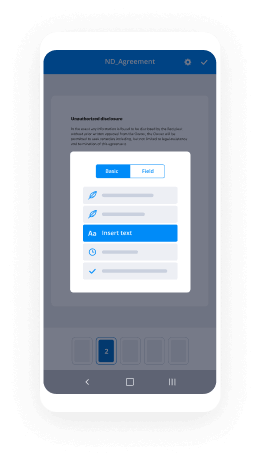- 1 -
Prepared by U.S. Legal Forms, Inc.
Copyright 2016 - U.S. Legal Forms, Inc.
DISTRICT COURT
STATE OF NORTH DAKOTA DIVORCE PACKAGE
MINOR CHILDREN
With or Without Property
Control Number ND–006–D
This packet contains the following: 1. Information about Divorce
2. Form List
3. Form Explanations
4. Instructions and Steps
5. Checklist
6. Access to Law Summary
You and your spouse must agree to all terms of the divorce to use this packet. All forms to be filed with the clerk must be printed on bond paper.
- 2 -
INFORMATION ABOUT DIVORCE
1. WHO MAY USE THESE FORMS: You may use the forms in this package only when
all of the following facts are true:
(a) Irreconcilable differences between the spouses have caused substantial reasons for not continuing the marriage and make it appear that the marriage
should be dissolved;
(b) There are minor children of the marriage;
(c) You and your spouse agree on all terms of the divorce.
2. THE BASICS: Actions for divorce in the State of North Dakota are filed in the District
Court . The title of a divorce action is a Complaint for Divorce. The spouse filing the
divorce is called the “Plaintiff,” while the non-filing spouse is called the “Defendant.”
The Complaint must be filed in the judicial district for the county where the Defendant
resides. However, if the Defendant is not a resident of North Dakota, the Complaint may
be filed in a judicial district of the Plaintiff’s choice. North Dakota Code §28-04-05
3. RESIDENCY REQUIREMENTS: North Dakota law requires that the filing spouse
(the Plaintiff) must have been a resident of the state for either at least si x (6) months
immediately prior to the filing of the Complaint, or at least 6 months prior to the entry of
the Decree of Divorce . North Dakota Code §14-05-17
4. GROUNDS FOR DIVORCE: North Dakota law allows no-fault divorce based on
“irreconcilable differences.” This package is only good for the ground of “irreconcilable
differences,” which is defined by statute as, “Those grounds which are determined by the
court to be substantial reasons for not continuing the marriage and which make it appear
that the marriage should be dissolved.” North Dakota Code §14-05-09.1
5. LEGAL SEPARATION: This package contains form for DIVORCE, not for Legal Separation. This information on Legal Separation is provided for your information
only. A legal separation cannot be obtained using the forms in this package.
A legal separation is different than a divorce. A legal separation is a court dete rmination
of the rights and responsibilities of a husband and wife arising out of the marital
relationship. A decree of legal separation does not terminate the marital status of the
parties, and the parties are not free to marry again. In order to view additional
information, please review, North Dakota Code §14-06-01.
- 3 -
6. WAITING PERIODS: The parties must wait 20 days after the entry of judgment to
marry again, unless they marry each other.
7. DISTRIBUTION OF PROPERTY: In a divorce, the property such as land, house,
buildings, and items of personal property owned by the couple is divided between the
parties. Debts owed are also allocated to one or both parties. This is accomplished by
means of a Separation and Property Settlement Agreement. You and your spouse must
agree to the property and debt division and memorialize your agreement in the
Separation and Property Settlement Agreement , which will be incorporated by reference
into the Decree of Divorce that ultimately ends your marriage. You may agree to divide
the property any way you like, as long as a basic fairness is maintained, and you both
agree. If you cannot agree on any item of this division, the dissolution of marriage
transforms into a contested divorce . A contested divorce is outside the scope of this
packet.
8. ALIMONY: Because this is an agreed divorce, you will decide issues of spousal
“alimony”-- the periodic payment of money from one spouse to the other on a temporary
or permanent basis. The forms in this no-fault divorce package assume that no alimony
will be paid and none will be sought-- but you may add provisions for alimony to the
Separation and Property Settlement Agreement if you desire. In a contested case, the
court might award alimony. A contested divorce is beyond the scope of this divorce
package. You should consult a local attorney regarding the possibilities concerning
alimony if you have questions or foresee conflict regarding this issue. In order to view
additional information, please review, North Dakota Code §14-05-24.1 et seq.
9. NAME CHANGE: When a divorce is granted, the court may restore the wife to her
maiden or former name if she so desires.
10. CHILD SUPPORT: Parents shall give their children support and education suitable to
the child's circumstances. The Court may compel either or both of the parents to provide
for the support of their children. Child support guidelines have been established by the
State of North Dakota, which establish the presumptive amount of child support to be
paid based upon the number of children of the marriage and the parties income.
In any action in which a court orders that payments for child support be made, the court
shall provide in its order that the payments be paid to the state disbursement unit for
remittance to the obligee.
11. CHILD CUSTODY: In an action for divorce, the court, before or after judgment, may
give such direction for the custody, care, and education of the children of the marriage as
may seem necessary or proper, and may vacate or modify the same at any time. Afte r
making an award of custody, the court shall, upon request of the non custodial parent,
grant such rights of visitation as will enable the child and the non custodial parent to
- 4 -
maintain a parent-child relationship that will be beneficial to the child, unless the court
finds, after a hearing, that visitation is likely to endanger the child's physical or e motional
health. Between the mother and father, whether natural or adoptive, there is no
presumption as to who will better promote the best interests and welfare of the child.
For the purpose of custody, the best interests and welfare of the child is determined by
the court's consideration and evaluation of all factors affecting the best interests and
welfare of the child. These factors include all of the following when applicable:
(a) The love, affection, and other emotional ties existing between the parents and child.
(b) The capacity and disposition of the parents to give the child love,
affection, and guidance and to continue the education of the child.
(c) The disposition of the parents to provide the child with food, clothing,
medical care, or other remedial care recognized and permitted under the
laws of this state in lieu of medical care, and other material needs.
(d) The length of time the child has lived in a stable satisfactory environment and the desirability of maintaining continuity.
(e) The permanence, as a family unit, of the existing or proposed custodial
home.
(f) The moral fitness of the parents.
(g) The mental and physical health of the parents.
(h) The home, school, and community record of the child.
(i) The reasonable preference of the child, if the court deems the child to be of sufficient intelligence, understanding, and experience to express a
preference.
(j) Evidence of domestic violence.
(k) The interaction and interrelationship, or the potential for interaction and interrelationship, of the child with any person who resides in, is present, or
frequents the household of a parent and who may significantly affect the
child's best interests.
(l) The making of false allegations not made in good faith, by one parent
against the other, of harm to a child
(m) Any other factors considered by the court to be relevant to a particular
child custody dispute.
12. MEDIATION: In any proceeding involving an order, modification of an order, or
enforcement of an order for the custody, support, or visitation of a child in which the
custody or visitation issue is contested, the court may order mediation at the parties' own
expense. The court may not order mediation if the custody, support, or visitation issue
involves or may involve physical or sexual abuse of any party or the child of any party to
the proceeding.
For more information, see the North Dakota Divorce Law Summary.
- 5 -
FORMS LIST
The following forms are included in this package:
1. Divorce Summons (ND-805D)
2. Complaint for Divorce (ND-820D)
3. Verification (ND-812D)
4. Financial Affidavit (ND-821D)
5. Child Support Guidelines (ND-822D)
6. Separation and Property Settlement Agreement (ND-DO-11A)
7. Admission of Service (ND-813D)
8. Stipulation of Agreement (ND-806D)
9. Decree of Divorce (ND-823D)
10. Notice of Entry of Decree (ND-808D)
11. Affidavit of Service by Mail (ND-809D)
Note: Depending on your County additional forms may be required that are County- specific. These forms will be available from the Clerk.
- 6 -
FORM EXPLANATIONS
All forms included in this are identified and described below.
1. Divorce Summons (ND-805D) – This form officially notifies your spouse of the Divorce
action.
2. Complaint for Divorce (ND-820D) – This document contains the legal details of your
request for the court to dissolve your marriage. Your Separation and Property Settlement
Agreement must be signed by both spouses and attached to the Complaint as “Exhibit A”
at the time you file the Complaint.
3. Verification (ND-812D) - This form must be signed in the presence of a notary public.
By signing this form you are telling the Court that you are telling the truth and that you
have a good faith reason for your requests.
4. Financial Affidavit (ND-821D) – This affidavit is to assist you in presenting sufficient
detailed information for use in determining the correct amount of child support to be
ordered in accordance with the North Dakota Child Support Guidelines (ND-822D).
5. Child Support Guidelines (ND-822D) – These guidelines establish the presumptive
correct amount of child support to be paid based upon the number of children of the
marriage and the parties’ income.
6. Separation and Property Settlement Agreement (ND-DO-11A) – This is the
agreement by which you and your spouse divide all of your marital property, assets and
debts. This agreement, if approved by the judge, will be incorporated into the final
Decree of Divorce in your case. Both spouses must sign the Agreement in front of a
Notary Public.
7. Admission of Service (ND-813D) - This form informs the court of the date that your
spouse received the Summons (ND-805D) and Complaint (ND-810D) .
8. Stipulation of Agreement (ND-806D) – This form is signed by both parties. It informs
the court that both spouses agree to the divorce and all terms thereof as indicated i n the
Separation and Property Settlement Agreement (ND-DO-11A), which is attached, along
with the Complaint.
9. Decree of Divorce (ND-823D) – This form, once signed by the judge and filed with the
clerk, ends your marriage according to the terms of the Separation and Property
Settlement Agreement (ND-DO-11A).
- 7 -
10. Notice of Entry of Decree (ND-808D) – This form is sent to your spouse along with a
certified copy of the Decree once the Decree has been entered.
11. Affidavit of Service by Mail (ND-809D) – This form is filed with the Court after you
have mailed the Notice and copy of the Decree to your spouse, as proof that you have
done so.
- 8 -
INSTRUCTIONS AND STEPS
Note: All forms containing a space for the signature of a Notary Public must be signed by the
appropriate party or parties in front of a Notary Public. Make several copies of the document s
that you prepare. You and your spouse should have a copy of everything you file, stamped
“filed” by the clerk.
STEP 1: In cooperation with your spouse, complete the following forms:
Form 1 - Summons (ND-805D)
Form 2 - Complaint for Divorce (ND-820D)
Form 3 - Verification (ND-812D) (You complete this form without your
spouse, and sign it before a notary public.)
Form 4 - Financial Affidavit (ND-821D)
Form 5 - Child Support Guidelines (ND-822D)
Form 6 - Separation and Property Settlement Agreement (ND-DO-11A)
A copy of the North Dakota Child Support Guidelines (ND-822D) has been
provided to assist the parties in determining the correct amount of child support to
be paid.
STEP 2: Attach the Separation and Property Settlement Agreement (ND-DO-11A) to the
Complaint (ND-820D). Label the Agreement (ND-DO-11A) “Exhibit A” by
writing this in clear, large letters in the bottom margin of the first page.
STEP 3: Make at least 4 copies of your completed documents. Go to the courthouse and
FILE your completed documents and any required copies with the clerk. (The
clerk will sign and stamp the Summons (ND-805D) and return it to you.) You
must pay filing fees at this time- call ahead to determine the amount a nd
acceptable forms of payment. Keep extra stamped “filed” copies of your
documents.
STEP 4: Deliver or mail copies of Forms 1-6 to your spouse along with Form 7. Your
spouse should make a copy of the completed and signed Form 7 and return it to you.
STEP 5: At this time, you and your spouse must each sign the Form 8- Stipulation of
Agreement (ND-806D). Attach a stamped-filed copy of the Complaint (ND-820D)
to the Stipulation of Agreement (ND-806D). Label the copy of the Complaint
(ND-820D) “Exhibit 1” by writing this in clear, large letters in the bottom margin
- 9 -
of the first page of the Complaint (ND-820D). (The Separation and Property
Settlement Agreement (ND-DO-11A) must be attached to the Complaint (ND-
820D) as “Exhibit A,” just as when you filed the Complaint (ND-820D).)
Go back to the courthouse and FILE the signed Stipulation of Agreement (ND-
806D) . At this time, ask the clerk for a hearing date for your final uncontested
hearing.
STEP 6: Complete as much as possible of the Form 9- Decree of Divorce (ND-823D) (the
Judge will fill in his name and sign) . Attach a stamped “filed” copy of your
Stipulation of Agreement (ND-806D) (with the Complaint (ND-820D) and
Separation and Property Settlement Agreement (ND-DO-11A) attached), to the
Decree of Divorce (ND-823D). Label the Stipulation (ND-806D) “Exhibit 1” by
writing this in the bottom margin of the first page in large, clear letters.
Attend the final uncontested hearing (you may not be required to attend. Consult
the Court Clerk.) Bring copies of all of your documents. Present the Decree of
Divorce (ND-823D) to the Judge. If all is in order, the Judge will sign the Decree
of Divorce (ND-823D). Go immediately to the clerk’s office and FILE the signed
Decree (ND-823D). Obtain a certified copy of the Decree (ND-823D) for your
records. Make or obtain a second copy and mail to your spouse, with the Form 10- Notice of Entry of Decree (ND-808D).
STEP 7: Sign Form 11- Affidavit of Service by Mail (ND-809D) before a Notary Public.
File this document with the Court, along with a copy of the Notice of Entry of
Decree (ND-808D).
After the court reviews all of the paperwork, the court may require a hearing. You will be
notified of the date and time and location of the hearing by the clerk’s office. You must attend
the hearing. If you fail to attend the hearing the court may not grant your divorce. If the court
approves the Settlement Agreement then the Clerk of Court will send you and your spouse a
letter and copy of the judgment telling you the judge has signed the “Findings of Fact,
Conclusions of Law, and Order for Judgment” and the “Judgment and Decree” has been filed
which means your divorce is final. If you need a certified copy of the judgment and decree you
may obtain one for a fee though the Clerk of Court’s office.
If the court does not require a hearing then, the Clerk of Court will send you and your spouse a
letter and a copy of the judgment telling you the judge has signed the “Findings of Fac t,
Conclusions of Law, and Order for Judgment” and the “Judgment and Decree,” has been filed
which means your divorce is final.
YOUR DIVORCE IS NOT FINAL UNTIL THE JUDGMENT AND DECREE IS SIGNED
AND FILED.
- 10 -
CHECKLIST
Forms 1-6 completed signed and notarized, as per instructions.
Forms 1-6 filed with the clerk of court.
Filing Fee Paid.
Forms 1-6 delivered to your spouse.
Your spouse completes Form 7.
Both spouses complete and sign Form 8.
Forms 7-8 filed with the court, and hearing date obtained.
Both spouses complete Form 9. Stipulation (ND-806D) attached as “Exhibit 1.”
Attend final uncontested hearing. Judgment (ND-807D) approved and signed by
Judge.
Form 9 signed and filed with clerk. Certified copy obtained.
Form 10 and certified copy of Form 9 mailed to former spouse .
Form 11 signed and filed with Court, along with copy of Form 10 .
- 11 -
NOTE ABOUT COMPLETING THE FORMS
The forms in this packet may contain “form fields” created using Microsoft Word. “Form fields”
facilitate completion of the forms using your computer. They do not limit you ability to print the
form “in blank” and complete with a typewriter or by hand.
If you do not see the gray shaded form fields, go the View menu, click on Toolbars, and then
select Forms. This will open the forms toolbar. Look for the button on the forms toolbar that
resembles a shaded letter “a”. Click in this button and the form fields will be visible. If they do
not become visible, then they were not included in this form package.
To complete the forms click on the gray shaded areas and type. You may also change other
words in the document if the document is not locked. The separation agreement is a good
example of a document that is not locked and allows you to make modifications outside the gray
shaded areas.
Some forms may be locked which means that the content of the forms cannot be changed whi le
the form is locked. You can only fill in the information in the fields. If you need to make any
changes in the body of the form, it is necessary for you “unlock” or “unprotect” the form. IF
YOU INTEND TO MAKE CHANGES TO THE CONTENT, DO SO BEFORE YOU
BEGIN TO FILL IN THE FIELDS. IF YOU UNLOCK THE DOCUMENT AFTER YOU
HAVE BEGUN TO COMPLETE THE FIELDS, WHEN YOU RELOCK, ALL
INFORMATION YOU ENTERED WILL BE LOST. To unlock click on “Tools” in the
Menu bar and then selecting “unprotect document”. You may then be prompted to enter a
password. If so, the password is “uslf”. That is uslf in lower case letters without the
quotation marks . After you make the changes relock the document before you begin to
complete the fields. After any required changes re-lock the document, then click on the first form
field and enter the required information. You will be able to navigate through the docum ent
from form field to form field using your tab key. Tab to a form field and insert your data . If you
experience problems, please let us know.
- 12 -
LAW SUMMARY
You may access the law summary for your State by using the link below:
http://secure.uslegalforms.com/lawsummary/ND/ND-006-D.htm
- 13 -
DISCLAIMER
These materials were developed by U.S. Legal Forms, Inc. based upon statutes and forms for the
STATE OF NORTH DAKOTA. All Information and Forms are subject to this Disclaimer: All
forms in this package are provided without any warranty, express or implied, as to their legal
effect and completeness. Please use at your own risk. If you have a serious legal problem we
suggest that you consult an attorney. U.S. Legal Forms, Inc. does not provide legal advice. The
products offered by U.S. Legal Forms (USLF) are not a substitute for the advice of an attorney.
THESE MATERIALS ARE PROVIDED "AS IS" WITHOUT ANY EXPRESS OR IMPLIED
WARRANTY OF ANY KIND INCLUDING WARRANTIES OF MERCHANTABILITY,
NONINFRINGEMENT OF INTELLECTUAL PROPERTY, OR FITNESS FOR ANY
PARTICULAR PURPOSE. IN NO EVENT SHALL U. S. LEGAL FORMS, INC. OR ITS
AGENTS OR OFFICERS BE LIABLE FOR ANY DAMAGES WHATSOEVER
(INCLUDING, WITHOUT LIMITATION DAMAGES FOR LOSS OF PROFITS, BUSINESS
INTERRUPTION, LOSS OF INFORMATION) ARISING OUT OF THE USE OF OR
INABILITY TO USE THE MATERIALS, EVEN IF U.S. LEGAL FORMS, INC. HAS BEEN
ADVISED OF THE POSSIBILITY OF SUCH DAMAGES.
THESE FORMS WERE PREPARED FOR STATEWIDE USE. HOWEVER, SOME
COUNTIES OR JUDGES MAY REQUIRE CERTAIN MODIFICATIONS TO THE FORMS
FOR USE IN YOUR PARTICULAR COUNTY AND MAY REQUIRE SPECIAL FORMS
NOT INCLUDED. CHANGES REQUIRED BY PARTICULAR JUDGES ARE NOT
UNCOMMON EVEN IF THE FORMS HAD BEEN PREPARED BY YOUR ATTORNEY.
REGARDLESS, YOU SHOULD BE ABLE TO USE THESE FORMS AND INSTRUCTIONS,
WITH ANY REQUIRED MODIFICATIONS, TO MAKE IT THROUGH THE PROCESS. IF
YOU NEED TO MAKE CHANGES, OR IF SPECIAL FORMS ARE REQUIRED IN YOUR
COUNTY, YOU CAN MAKE THE CHANGES AND REFILE, OR OBTAIN THE SPECIAL
FORMS EITHER FROM THE CLERK OR A CLOSED DIVORCE FILE WHICH YOU CAN
USE AS AN EXAMPLE.


